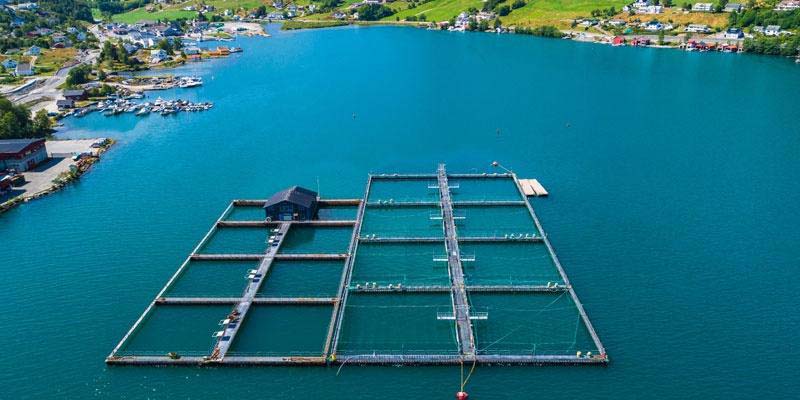
Gain insight into the growing Integrated Well Services Market in the Asia Pacific in this bespoke report by Offshore Network
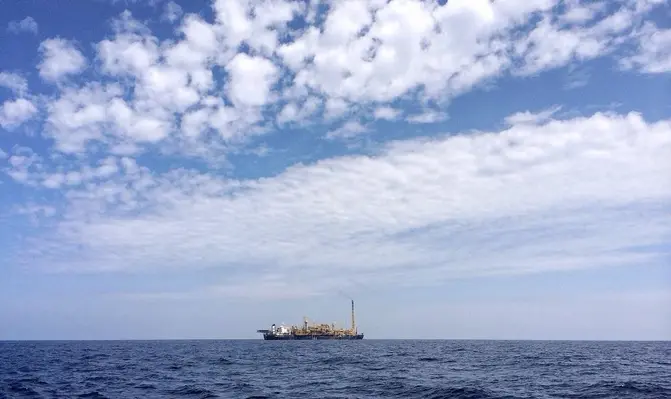

Reliance Industries Limited (RIL) and bp have announced the start of production from the Satellite Cluster gas field in block KG D6 located about 60km from the existing onshore terminal at Kakinada on the east coast of India in water depths of up to 1,850m.
RIL is India’s largest private sector company spanning hydrocarbon exploration and production, petroleum refining and marketing, petrochemicals, retail and digital services. Together with bp, the company has been developing three deep-water gas developments in block KG D6 – R Cluster, Satellite Cluster and MJ which are expected to produce a combined 30mn cu/m per day (around one billion cu/ft a day) of natural gas by 2023.
Both of the developments will utilise the existing hub infrastructure in the KG D6 block. RIL is the operator of the block with a 66.67% participating interest, while bp holds a 33.33% participating interest. It had originally been scheduled to start production in mid-2021.
The Satellite Cluster is the second of three scheduled developments to come onstream, following the start-up of R Cluster in December 2020. R Cluster is located at a water depth of greater than 2,000m, is the deepest offshore gas field in Asia, and is expected to reach plateau gas production of about 12.9mn cu/m per day in 2021.
Mukesh Ambani, Chairman and Managing Director of Reliance Industries Limited, commented, “We are proud of our partnership with bp that combines our expertise in commissioning gas projects expeditiously, under some of the most challenging geographical and weather conditions. This is a significant milestone in India's energy landscape, for a cleaner and greener gas-based economy. Through our deep-water infrastructure in the Krishna Godavari basin we expect to produce gas and meet the growing clean energy requirements of the nation.”
bp Chief Executive, Bernard Looney, added, “This start-up is another example of the possibility of our partnership with RIL, bringing the best of both companies to help meet India’s rapidly expanding energy needs. Growing India’s own production of cleaner-burning gas to meet a significant portion of its energy demand, these three new KG D6 projects will support the country’s drive to shape and improve its future energy mix.”
Together the R Cluster and Satellite Cluster are expected to produce about 20% of India’s current gas production. The third KG D6 development, MJ, is expected to come onstream towards the latter half of 2022.
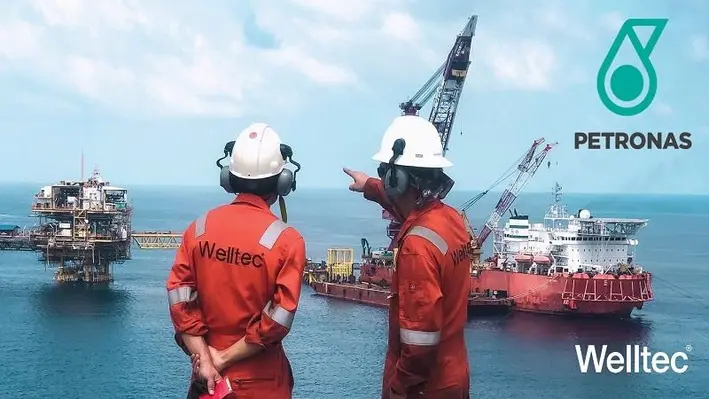

Petronas, a global energy solutions company, has awarded an exclusive three-year contract to Welltec, a provider of robotic well solutions, appointing them as sole provider of downhole conveyance and powered mechanical services in the eastern and western regions of Malaysia.
Commenting on the contract, which officially commenced on 1 April, Espen Dalland, Area Vice-President for the Asia-Pacific Region at Welltec, said, “It’s a great team effort that has led to the award of this exclusive long-term contract with Petronas, and Welltec has demonstrated a strong ability to deliver – even through a challenging 2020 – high quality services in a safe manner to the largest assets in the country at a very cost-effective rate.”
“This winning combination is the foundation for Petronas awarding us an even larger work scope for the next three years, where we will continue to deliver world-class technology and services.”
Confirming a strong relationship
The new deal covers the entirety of Petronas’ intervention operations, highlighting the confidence that the company has for Welltec’s fleet and technological capabilities which has been manifested across a successful and longstanding relationship.
Alex Nicodimou, Vice-President of Sales & Marketing at Welltec, added, “This is a fantastic win for us. Petronas is a key customer in the region who over recent years have moved more and more towards an integrated approach for interventions. The fact they have provided us 100% of their intervention work speaks volumes about their belief in our technology and ability to deliver. We’re looking forward to continuing to support them to the best of our abilities.”
Welltec continue admirable performance
The award of such a promising contract should be of no surprise to anyone who has tracked the progress of Welltec over the last few months. The company reported a revenue decline of less than 15% in 2020, which was comparatively low compared to the rest of the industry and also maintained operating earning margins close to 40%, which was among the best across the industry. At the start of the year the company also announced a substantial agreement with Equinor for the long-term provision of integrate wireline services to key platforms across the Gullfaks and Stratfjord fields which will run for at least five years, with the potential to run for more than ten.
The company will also seek to continue this strong performance under new leadership as Founder and CEO of Welltec, Jørgen Hallundbæk, has announced his retirement from the management team to be replaced as CEO by Peter Hansen, the former COO of the company.
Preparing to facilitate what he believes will be a bright future for the company, Hansen commented, “Together with our global teams, I look forward to continuing to contribute to the development of Welltec. We are global leaders in our service and products categories and are determined to strengthen our positions further. We have expanded our business potential by investing in geothermal and carbon capture and storage technology development. Combined with our core services and products, we believe that this creates a solid platform for the future.”
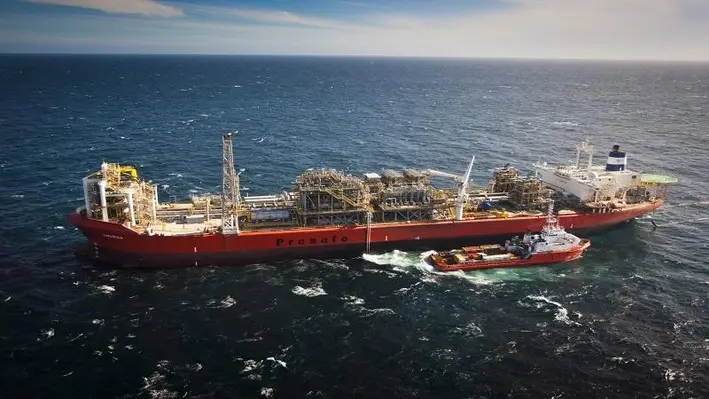

The Tui oil field, located 50km offshore Taranaki Coast in New Zealand has been marked for decommissioning since production ceased in 2019, and it appears progress is finally being made on the project.
The Tui oil field
The Tui oil field started production in July 2007 with a healthy production capacity of approximately 50,000 barrels of oil a day. In March 2017 Tamarind Taranaki increased its stake in the Tui oil field permit to 100% and spent the next few years attempting to improve oil recovery to extend its life. Unfortunately in November 2019 an oil sheen, caused by a damaged subsea flowline, was observed alongside the floating production storage and offloading (FPSO) unit, the Umuroa, and so production from the field was ceased.
The planned decommissioning project
With production at an end, it was time to retire the field and so a decommissioning programme was planned to enact this. This would require the demobilisation of the FPSO Umuroa and the plugging and abandonment (P&A) of eight subsea wells and associated subsea structure.
Initially, the first phase of decommissioning included FPSO disconnection and removal, cleaning of flowlines and safely leaving them on the seafloor with additional vessels required for handling flowlines, umbilicals, mooring lines and tugs to hold the FPSO in place during disconnection operations.
The second phase of the project included the P&A of wells to avoid the leakage of hydrocarbons into the marine environment, as well as the removal of the remaining subsea infrastructure.
The New Zealand Government takes over
These plans, however, would never come to fruition as on 11 November 2019, the field operator Tamarind Taranaki announced that it may be insolvent and swiftly put the company into administration, with liquidation following in December 2019.
With the operator unable to carry out the decommissioning, the New Zealand Government received the Tui assets and picked up the project to remove the Umuroa FPSO vessel and decommission the field. The Ministry of Business, Innovation and Employment (MBIE) therefore signed an agreement with BW Umuroa Pte Ltd (BWU), the owner and operator of the Umuroa, to demobilise and disconnect the vessel from the Tui field before carrying out P&A and decommissioning work on remaining associated infrastructure.
An update on these operations has been provided by Lloyd Williams, Project Director for the Tui oil field decommissioning, in an interview with ‘Stuff’. Williams commented that since work began in January, following an underwater survey of the infrastructure, around 14km of flowlines have been successfully flushed.
Now this has been completed, attention has turned to disconnecting the production lines (flowlines, umbilical cables and gas lift lines) from the FPSO vessel. Work began in late March and once completed, the lines will be lowered to the sea floor before the mooring system anchoring the Umuroa will be detached.
Williams continued that this will allow the Umuroa to be removed from the field, which is expected to occur in May. New Zealand Petroleum and Minerals have also noted that four vessels have already been selected for this task, with two already arriving at the port of Taranaki.
Outlining the next stages Williams comments that once these phases had been carried out it would then be time to completely remove the subsea equipment before, finally, the P&A of the five production and three exploration wells can be undertaken.
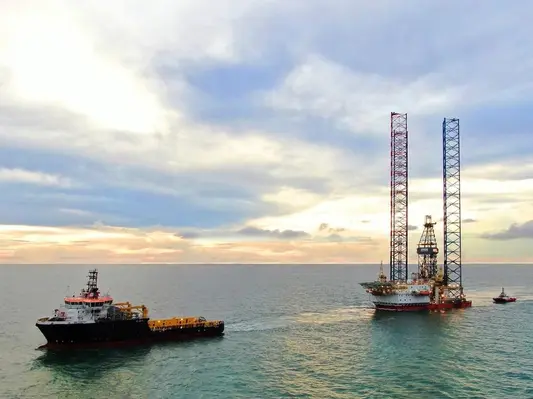

PTT Exploration and Production Public Company Limited (PTTEP) have announced a successful oil and gas discovery from the Sirung-1 exploration well in Block SK405B, offshore Sarawak in Malaysia, that was drilled by PTTEP Sarawak Oil Limited, a subsidiary of PTTEP.
Block SK405B is located in shallow waters approximately 137 km off the coast of Sarawak. PTTEP Sarawak Oil Limited is the operator with 59.5% participating interest, with MOECO Oil and PETRONAS holding a 25.5% and 15% interest respectively.
PTTEP Sarawak Oil Limited commenced the drilling of the Sirung-1 wildcat well in January 2021. The well was drilled to a total depth of 2,538 m where it encountered a significant oil and gas column of more than 100 metres, in the clastic reservoirs. An appraisal well is scheduled in the near future to assess the upside resources.
Drilling for long-term growth
The achievement is the latest outcome of PTTEP’s ‘Execute strategy’ which focuses on building reserves for long-term growth.
“The Sirung-1 exploration well marks PTTEP’s third discovery offshore Malaysia following SK410B’s Lang Lebah and SK417’s Dokong. PTTEP also plans to explore nearby prospects in the PSC next year. The achievements have strengthened our investment base as we continue to expand our exploration horizon in Malaysia,” commented Phongsthorn Thavisin, CEO of PTTEP.
Apart from the Sarawak SK405B, there are also SK410B, SK314A, SK438, SK417, PM407 and PM415, all still in the exploration stage. Major projects in PTTEP’s portfolio in Malaysia include the producing assets in Block K, SK309, SK311, the Rotan-Buloh field in Block H and the jointly operated gas fields with PETRONAS Carigali in the Malaysia-Thailand Joint Development Area. PTTEP is also a joint investor with PTT, through the PTT Global LNG Company, in the MLNG Train 9 Project, an LNG liquefaction plant in Sarawak.
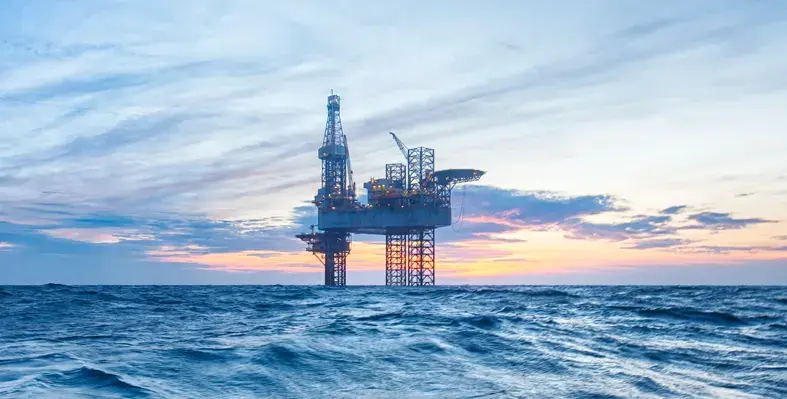

China National Offshore Oil Corporation Limited (CNOOC) have announced that the Caofeidian 6-4 oilfield, located in the Midwest of Bohai, has commenced production.
CNOOC holds a 100% interest in the oilfield, which has an average water depth of about 20m, and acts as the operator. In addition to fully utilising the existing processing facilities of Nanpu 35-2 oilfield and Qinhuangdao 32-6 oilfield, a new central platform has been built on the field as part of the project. A total of 42 development wells are planned, including 30 production wells, 12 water injection wells and water source wells. The project is expected to reach its peak production of approximately 15,000 barrels of crude oil per day in 2023.
Guided by the vision of green development, Caofeidian 6-4 oilfield will actively promote green and low-carbon production. After putting into production, the project will achieve zero discharge of production and living sewage into the sea. With the introduction of onshore power engineering, it is estimated that about 16,000 tons of standard coal will be saved, and about 40,000 tons of carbon dioxide will be reduced annually.
Sustaining a strong performance
The news surrounding the Caofeidian 6-4 oilfield closely follows the release of CNOOC’s 2021 business plan and strategic strategy which provided a brief overview of its performance last year. Against the challenges caused by Covid-19, such as the huge impact from low oil price, the company invested a great deal into further reducing costs and enhancing efficiency, promoting reform and innovation, ensuring safety in production and above all growing its oil and gas reserves and production. As a result of this, CNOOC recorded a net production record high of approximately 528mnboe in 2020.
Following this, the company is seeking to strengthen this resource base even further and has planned to drill 217 exploration wells and collect approximately 17,000 sq km of 3D seismic data. Additionally, CNOOC expects 19 new projects to come on stream, such as the Lingshui 17-2 gas fields development, the Lufeng oilfields regional development, the Buzzard oilfield phase II in the UK and Mero I oilfield in Brazil. CNOOC is targeting a net production of 545-555mnboe in 2021 and estimates it will achieve 590-600mnboe and 640-650mnboe in 2022 and 2023 respectively as a result of these ventures.
Xu Keqiang, CEO of CNOOC, said, “In 2021, under the theme of high-quality development, the Company will be committed to steadily increasing its oil and gas reserves and production, focusing on investment efficiency, maintaining its cost competitiveness, while actively pursuing the concept of green and low-carbon development, to create excellent returns for our shareholders.”
With the Caofeidian 6-4 oilfield commencing production, and potentially reaching a peak production of 15,000 barrels of crude oil per day by 2023, it appears CNOOC have made a strong start in their attempts to meet their forthcoming targets over the next few years.
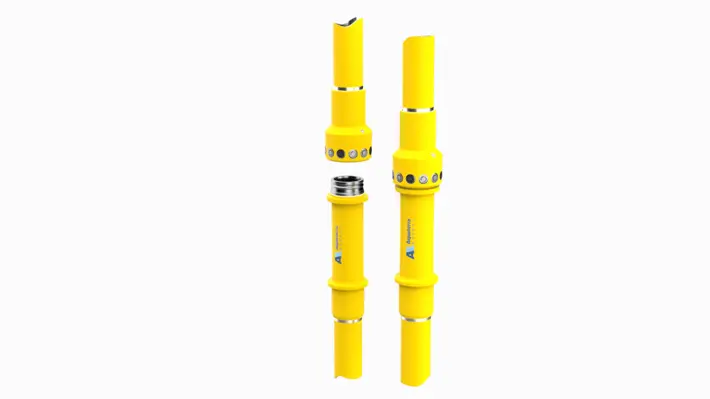

Aquaterra Energy, a company focused on delivering offshore engineering solutions, has secured a multi-million-dollar riser contract with a marine vessel owner and operator, for deeper water well intervention projects mainly in the Asia Pacific region.
Aquaterra Energy will deliver a large-bore (7 3/8”) AQC-CW completions and workover riser system with automated handling package that will operate in water depths of up to 1,500m. The system has been designed to withstand repeat make and breaks, whilst offering a gas tight metal-to-metal seal. The solution can be operated from a lightweight intervention vessel, a semisubmersible or from a jack-up rig as a surface riser, open water subsea riser or as a landing string.
The NACE compliant technology and unique pipe to connector attachment eliminates welding – making the riser lighter offering enhanced water depth deployment capacity. In addition, the ability to pressure test each connection upon make up provides enhanced environmental reassurance against well bore fluid discharge.
Aquaterra Energy will manage the entire project scope via its in-house engineering and project management teams. Throughout the project, Aquaterra Energy will provide fatigue utilisation and management through riser monitoring hardware to extend asset life, as well as automated hands-off connector makeup and umbilical handling equipment to improve safety and enhance offshore efficiency.
Successful spell continues for Aquaterra Energy
James Larnder, Managing Director of Aquaterra Energy said, “This project marks a key milestone in our Asia Pacific success story, whilst also diversifying our AQC riser offering into deeper water operations. All our systems are intelligently engineered to be efficient with no wasted materials and a focus on quick connection to reduce operational time whilst assuring integrity. Importantly, these efficiencies also support our own and our customers’ decarbonisation efforts.”
The company supports customers across the globe in the North Sea, South East Asia, the Caribbean, West Africa and Australia. While Covid-19 may have hindered much of the industry last year Aquaterra Energy continued its impressive workload with the award of several substantial contracts such as the front end engineering and design contract from DeNovo Energy for a second Sea Swift platform offshore Trinidad and Tobago and the commission to construct a platform for Chevron offshore Angola. The company has also continued investment in its product line such as the QuikDeck underdeck access system which, the company claimed, had already helped secure new work worth more than £1mn. With the penning of this new contract in Asia Pacific there appears to be no sign that the company is slowing down in 2021.
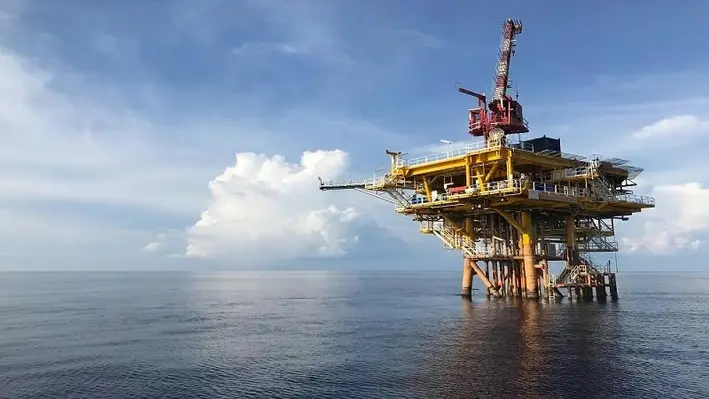

Petronas has awarded Block SB405, offshore the coast of Sabah, Malaysia, to ConocoPhillips East Malaysia Limited (COPEM) a subsidiary of ConocoPhillips and Petronas Carigali (PCSB). The award of this exploration block, which has an area size of 5,857 sq km in water depth of up to 100m, is expected to bolster exploration activities off the coast of Sabah following the opening of more block investment opportunities in the country.
COPEM is the operator for Block SB405 PSC, with a participating interest of 85%, while PCSB holds the remaining 15%. SB405 is the new addition to COPEM’s existing interests in five production sharing contracts (PSC) in Malaysia, which are Block J, G and Kebabangan located off the coast of Sabah; and SK304 and WL4-00 located off the coast of Sarawak.
Mohamed Firouz Asnan, Senior Vice President of Malaysia Petroleum Management, commented, “The entry of COPEM with its world class proprietary seismic technology into Block SB405 is expected to enhance the hydrocarbon resource potential off the coast of Sabah. This is an area that has a proven working petroleum system with previous discoveries such as Kuda Terbang and Nymphe fields. At the same time, the new investment of COPEM in Block SB405 represents enhanced confidence of foreign investors in the upstream sector in Malaysia.”
“The partnership with PCSB provides that winning combination to support the potential development of the resource within the North East Sabah basin area upon successful commercialisation of the discoveries. Under our right asset, right player strategy, we hope to unlock the full potential of the hydrocarbon resources in Malaysia towards successfully delivering clean and reliable energy to our customers in Malaysia and abroad,” he added.
More blocks on offer
Alongside signing the PSC with COPEM, Petronas has also announced that it will be offering 13 offshore exploration blocks offshore Malaysia at the upcoming Malaysia Bid Round (MBR) 2021 with six discovered fields included to incentivise investors.
Mohamed Firouz Asnan said, “MBR 2021 will feature significant enhancements which include larger block areas coupled with flexible bidding options and low entry costs. We will also be offering relatively new fiscal terms to be applied in the PSCs such as enhanced profitability (EPT) for the shallow water blocks, the late life assets (LLA) and small field assets (SFA) which are designed to match the risk and rewards of the investments with the type of assets available.”
“These terms have been formulated based on the feedback from industry players, taking into account market conditions, further strengthening Malaysia’s position as the oil and gas hub in a growing and thriving market of South East Asia. Besides improved fiscal terms, Malaysia offers good network connectivity by way of established world-class infrastructure which enables ease of monetisation,” he added.
In recent months Malaysia has shown high potential for future oil and gas development offshore with fresh discoveries, such as PTT Exploration & Production announcing its biggest find to date in the SK 410B block, set to boost already high production levels of natural gas and oil. The news distributions by Petronas will only serve to bolster and consolidate the country’s position as one of the highest producing countries in Asia.
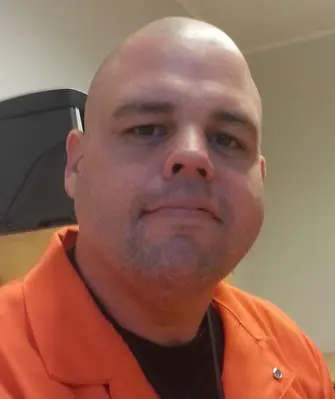

For more than 25 years Grant Pierce has worked for onshore and offshore service and oil and gas operations across the globe, accruing an extensive knowledge base in this time. He sat down with Offshore Network to divulge his insights on the offshore oil and gas industry in the aftermath of the Covid-19 pandemic, what the associated media is failing to cover, and which regions could potentially be hotbeds for well intervention operations in the future.
You have been vocal about media outlets lacking in terms of future well intervention and plugging and abandonment (P&A) work. Could you elaborate on this?
Pierce: “I do not think there has ever been a large focus on upcoming work that is happening unless it is a big contract win - that is when you will hear about work being publicised. But you never really see publications on campaigns coming up until they are done, then you might hear about three or four extra jobs that service companies have done - they normally come out in a group.”
“You might hear a job about Helix and a client in the Gulf of Mexico and then you may hear something about C-innovation in the same region a few weeks later but it has never really been consistent. Of course these days the focus has been more on clean tech and politics; that is what is in the media these days as that is what generates numbers.”
It does seem that P&A work is somewhat avoided by the industry, but with green targets and sustainability increasingly on the agenda do you think we will see more P&A work in the future?
Pierce: “Absolutely there will be more work pushed forward. They were talking about it during the OWI Australia conference on 9 February. Government regulators are pushing this work to be done. Definitely in Australia NOPSEMA had given deadlines and were reducing them. That is the kind of thing that is happening – this work is being pushed forward rather than back by the government and regulators are saying we have to get this done now. For sure P&A is being focused on globally right now and will feature more in the future.”
Do you have any suggestions to increase P&A efficiency to get more of this work done in the future?
Pierce: “Really just sharing from other areas in the industry. Taking lessons from the UK and applying into them Africa, or from Africa into Australia. Of course the same model cannot work everywhere; we work differently in different countries and regions. The regulations are more stringent in some places, for example, and so it is difficult to apply the same cookie cutter model everywhere.”
“One other method is collaboration to share vessels. They are speaking about it now in more areas, but it has recently become more normal in Africa to bring in a well intervention vessel and share it between operators. By doing this one operator is not taking all the cost - they have a schedule where they work for one operator and then they will move onto another, sharing the cost of the vessel. This keeps the vessel working in the country rather than having a huge cost to come in, then huge cost to go back home, then the vessel remaining idle for two months and then going back out to the same area for a different client.”
Looking to the future, are there any regions we should be keeping our eye on over the next few years for development or P&A work?
Pierce: “The problem with new frontier places is sometimes costs can be prohibitive and so the company wouldn’t make a lot of money on long term investments. Because of this there are fewer frontier areas left. However, there is some focus on some places in Africa, such as Senegal, some regions like Guyana and Suriname and even around the Bahamas and South America are gaining interest. Brazil is probably the next cost-efficient area to do work in so there will probably be more development there – I expect that area to pick up.”
“In terms of P&A, there is work everywhere. It is really huge in Thailand and Malaysia with a lot of hydraulic workover units doing loads of P&A work and this is ongoing all the time. There are new units and new work over units constantly being built to do that work. Additionally, Australia is ramping up in a serious way and I would also highlight P&A work in Mauritania, Angola, Nigeria, Ghana, and in the Gulf of Mexico.”
Daniel Yergin has suggested that the term energy transition is used a lot without it being properly understood and said ‘you can’t just change the system overnight’. Do you have any thoughts on this and what it means for the future of offshore oil and gas?
Pierce: “I am in full agreement. What fossil fuels can do is astounding. For instance, they assist every other technology that we can imagine with more than 6,000 products made from by-products of petroleum. It is very hard to think that we can just un-marry from fossil fuels. The use will start going down with people becoming more attuned to using alternative energy technologies, but I don’t think there will be a complete transition within the next thirty years.”
“A lot of energy companies are responding to government initiatives and saying ‘Okay if you say we cannot do it we will distance ourselves’ but they are still buying up acreage in South Africa and Suriname. It still goes on; it can’t just go away tomorrow. It is something that will have to be worked on over the next fifty years.”
“The key is to reduce emissions produced by the industry and work in a more sustainable way such as reducing the amount of equipment that is being moved around. But we cannot stop development. If we shut things off tomorrow we would be where we were one hundred years ago.”
You are very passionate about the well being of offshore workers, which has been at risk due to the pandemic with people having longer stays offshore. What is the best way to treat this problem and ensure employees are protected?
Pierce: “More collaboration and sharing ideas and ways of doing business between service companies, operators and any contractors involved is needed to prevent people being stuck for long periods of time. I know that regionally, the upper management at Petronas seem to have done a good job at managing their bridging documents ahead of time and changing those documents to accommodate the situation. They worked together with their partners to better utilise the time and people in a more efficient way to minimise negative effects. They were definitely a company that stayed on top of their business and kept their people moving despite it being very difficult to get employees around with all the quarantine restrictions in Malaysia. They were a very good example in this regard.”
“I know as well that in Australia even though they have tight control orders (a person cannot move between states without major procedures) they have done a good job there, with Cooper Energy for example still managing to facilitate work in the region.”
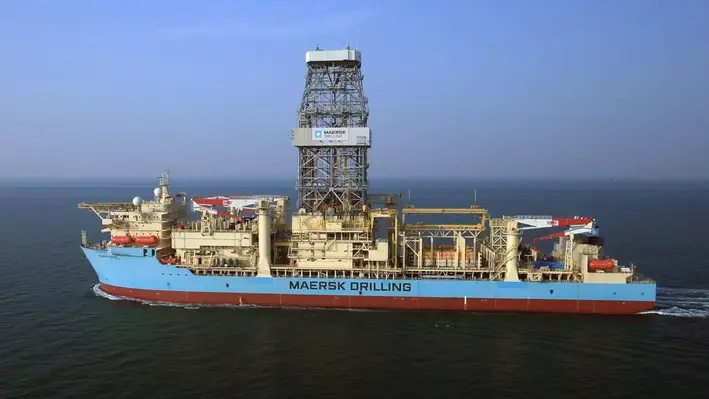

Maersk Drilling has secured a contract from Korea National Oil Corporation (KNOC) for the drillship Maersk Viking to drill one exploration well in Block 6-1 offshore the Republic of Korea. The contract is expected to commence in June 2021, in direct continuation of the rig’s previous work scope, with an estimated duration of 45 days. The contract value is approximately US$14.5mn, which includes mobilisation and demobilisation fees.
Morten Kelstrup, Chief Operating Officer of Maersk Drilling commented, “We are pleased to be awarded this contract with a new customer in the form of KNOC for their first-ever drillship operation and are confident in our ability to quickly start up operations in Korean jurisdiction after Maersk Viking moves on from its previous job. The rig and its crew have shown an impressive ability to always deliver safe and efficient operations, even during this challenging period marked by a global pandemic.”
Maersk Viking
Maersk Viking is a high-spec ultra-deepwater drillship vessel which has a maximum drilling depth of 12,000m and a maximum water depth of 3,657m. It boasts a variety of features such as a 3.5t pipe handling knuckle boom crane; five National 14-P-2200, 7500psi HP single-acting triplex mud pumps; the TDX 1250 system rated for 7500 psi and 2680 hp; and accommodation to allow for up to 230 personnel on board.
Delivered in 2013, the Maersk Viking has a wealth of experience after conducting jobs for ExxonMobil, Aker Energy, AGM and POSCO in a variety of different regions such as the Gulf of Mexico, Ghana and Myanmar. Currently, the vessel is mobilising for a campaign in Brunei Darussalam after Brunei Shell Petroleum Company exercised the option to add exploration drilling work. This will see the vessel start work in May 2021 for an estimated duration of 35 days continuing on from the rig’s previously agreed work scope. The contract value extension of these operations is approximately US7.1mn.
Maersk in 2021
The KNOC contract is the latest of a number of those received by Maersk Drilling in 2021 with the company most notably also securing a two-well contract for the low emission rig Maersk Integrator with Aker BP in the North Sea; an agreement for the deepwater rigs Maersk Valiant and Maersk Developer for exploration and appraisal projects offshore Suriname with Total E&P Suriname; and deploying Maersk Resolve to drill a new well for Spirit Energy in the North Sea.
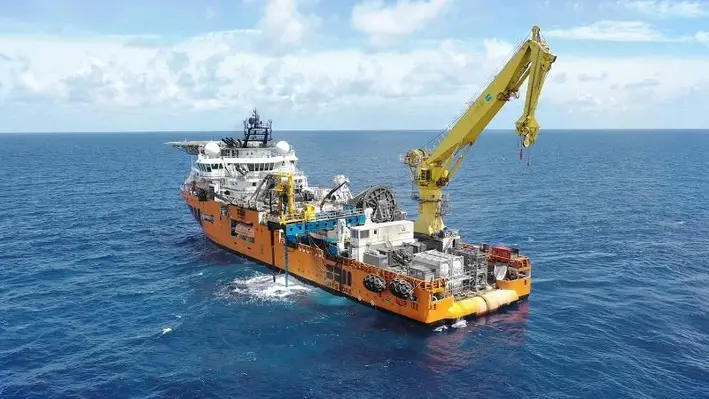

Genoa Black connected with Wouter Mezger, Commercial Director at Barge Master, as they discussed the recent success of the Deep Water Floating Drill Operation after the project claimed Most Innovative Solution at the OWI Global Awards 2020.
The Barge Master Deep Water Floating Drill Operation uses motion capture to eliminate vessel motions, allowing the operation of machinery with the same precision as onshore even in adverse weather conditions By integrating their BM-T700 motion compensation platform and the reverse circulation drill rig from Large Diameter Drilling (LDD) Barge Master has completed the installation of seven anchor mooring piles for a Catenary Anchor Leg Mooring (CALM) Buoy as well as a world first: drilling operations from a diving support and construction vessel in water depths of more than 270m.
Behind the projects success:
Mezger opened by thanking the judging panel for their decision and commented, “We think it has been recognised because typically drilling of this kind is usually carried out by a Jack-up barge [which are typically expensive to mobilise, hard to manoeuvre and limited by water depth and soil conditions]. We are filling in the gap. By integrating the motion compensated platform with an existing well intervention drill unit or technology a new innovative safe solution was developed which can be implemented on many other projects, moving the whole industry forward.”
When asked about the value this holds for customers Mezger responded, “The method of operation and the combined approach of using the Barge Master motion compensated platform and existing drill rig or intervention unit will bring great value to the oil and gas market and opens up new possibilities to perform well intervention on offshore wells in a safe and efficient way.
“The set up is a big step not just for the oil and gas market but throughout the marine industry where typical well intervention methods used by jack-up barges are not feasible in these water depths and require the need for a more costly floating drilling solution. We can bring a new cost effective solution that achieves the same end result.”
Why recognition was significant:
Mezger continued by commenting that receiving the award was recognition for the project and the team that had worked so hard on innovative solutions and confirmed the company’s belief in the product.
Reflecting on 2020 and looking to the future:
The Commercial Director considered the lessons learnt across 2020 and how the company is preparing for 2021, he stated, “Our priority is always safety first. It is embedded in the culture of our organisation both in the office and operations offshore. In 2020 we faced some challenges. Implementing a new technology, we felt the ability to travel and showcase the product to the customers, with the ongoing activities, has made bringing this new solution to the market rather hard. For 2021 we have learnt to focus and target specific markets for our applications.”
There are no suggestions that the success of the Water Floating Drill Operation will dry up any time soon, with the OWI Awards judges noting that it is a ‘world’s first that is flexible for a wide range of operations’. Certainly Mezger believes the future is bright as he concluded, “With the award we have received industry recognition that will help us reach out to a broader spectrum of clients and help them open up even more to this new innovative solution.”


This month’s video demonstrates how certainty allows for better and faster decision making and evaluate the tubing conditions of multiple sub-sea completed wells pre-abandonment.
EV was requested by a global operator to perform a multi well campaign. EV’s Optis HD Electric line camera was used to inspect the tubing conditions of multiple sub-sea completed wells pre-abandonment.


Gain insight into the growing Integrated Well Services Market in the Asia Pacific in this bespoke report by Offshore Network
Page 12 of 14
Copyright © 2025 Offshore Network